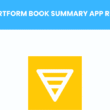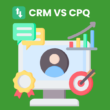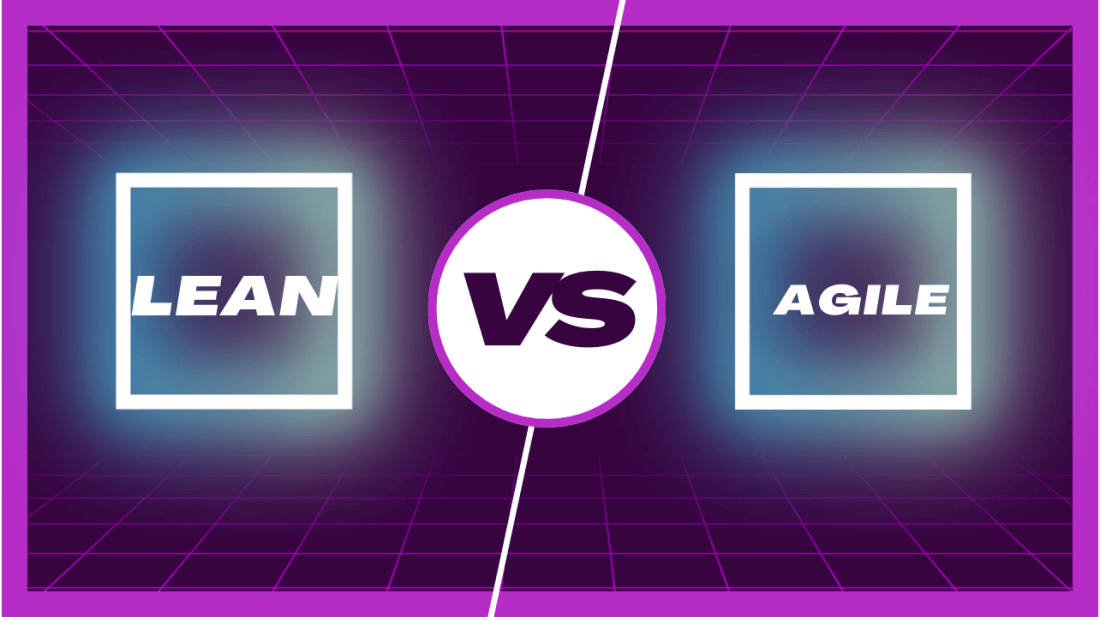Table of Contents Show
Navigate the enthralling journey of lean vs agile, unraveling key differences for effective decision-making, bolstering your team’s productivity, and driving success.
Understanding Lean and Agile
Lean and Agile are strategic philosophies aimed at maximizing value by minimizing waste and responding quickly to change. Both are solutions to enhance productivity, but each offers a unique approach.
Unlock the potential of these proven strategies for high-impact productivity. As an entrepreneur or manager, understanding the nuances of Lean and Agile can revolutionize your team’s efficiency and effectiveness.
Defining Lean
Lean, at its core, is a system that emphasizes reducing waste while cultivating efficiency. It’s a philosophy that relentlessly pursues the perfect balance between resources, operations, and performance.
Implementing Lean can streamline your operations and enhance productivity, fostering sustainable growth for your organization through efficient resource management and waste reduction.
Lean methodologies offer a comprehensive guide that helps organizations minimize waste, improve quality, and ultimately, deliver value more rapidly.
Defining Agile
Agile, fundamental to modern software development, emphasizes flexible planning, evolutionary development, and rapid and adaptable responses to change. It empowers teams to deliver value to customers faster and with improved quality. The heart of Agile is swift, iterative action and client satisfaction, realized through consistent customer feedback.
Diving into the heart of Agile, it’s a process-centered approach that draws on iterative work sequences, known as sprints. Each sprint provides a tangible deliverable, which garners customer feedback for subsequent iterations. With its roots in the software industry, Agile’s essence is about testing, learning, and adjusting.
Unveiled in the Agile Manifesto, the philosophy focuses on individuals, interactions, working software, customer collaboration, and responding to change. Agile’s straightforward principles place a high value on interactions and outcomes over extensive documentation, ultimately fostering an environment of fast-paced innovation.
Agile methodologies, including Scrum, Kanban, and Extreme Programming (XP), offer various strategies for the successful implementation of Agile principles. Each method provides a unique way to organize tasks, ranging from structured to a more liberal approach. Choosing the methodology depends on the organization’s culture and project requirements, intending to maximize team performance and customer satisfaction.
Origins and Principles
Tracing back to post-World War II Japan, Lean emerged from Toyota’s quest for efficiency and waste reduction in production processes. Its principles emphasize customer value, perfecting workflows, and continuous improvement. In contrast, Agile, conceived during the 2001 gathering of software developers, focuses on human-centric and iterative methods of work. Its core values and principles highlight collaborative efforts, frequent product deliveries, and flexibility to changing requirements.
Taking an in-depth look, we find Lean tracing its roots to the Toyota Production System in Japan which aimed to eliminate waste and elevate efficiency. Agile, born from the collective minds of software developers during a 2001 retreat, emanates principles emphasizing iterative progress, collaboration, and embracing changes. Both methodologies champion different paths mirroring their unique origins and principles yet leading towards a common goal – productive efficiency.
Origins of Lean
Lean began its historic journey in the mid-twentieth century. The birthplace is Toyota’s Japanese production system, which it focuses on eliminating waste in all forms.
Striving for efficiency, the Lean philosophy carved its identity. It developed the means to produce only what was needed when it was needed and in the required amounts.
The genesis of Lean can be traced back to Taiichi Ohno, the architect of the Toyota Production System. He emphasized respect for people and constant learning as the pillars of this movement.
Though its roots lie in manufacturing, Lean’s principles have seeped into various industries. Today, businesses worldwide use Lean practices to ramp up productivity, improve quality, and drive success.
Origins of Agile
Agile methodology emerged in the early 2000s, a response to the rigid, documentation-heavy waterfall development method. Importantly, its origins lie in software development, aiming to manage complexity and unpredictability through iterative work and customer collaboration.
Agile’s inception can be traced back to an illustrious gathering of seventeen software development pioneers at a ski resort in Utah in 2001. Through tireless discussions and debates, they developed the Agile Manifesto.
This manifesto set the stage for a revolution in software development. It emphasized individuals and interactions over processes and tools, working software over comprehensive documentation, customer collaboration over contract negotiation, and responding to change over following a plan.
Such principles fundamentally reshaped the approach to project management and the software development process. They spurred continuous improvement, adaptability, and a shift towards a customer-focused approach.
The deployment of Agile stretches beyond software development today. Many industries, recognizing the power of its flexible approach and customer-centric ethos, have adopted Agile to drive productivity and success in a volatile, uncertain world.
Core Principles of Lean
Lean management, known for its focus on enhancing any business environment, is underpinned by five unique characteristics. ‘Value’ drives customer satisfaction; ‘Value Stream’ identifies and eliminates waste; ‘Flow’ ensures smooth operations; ‘Pull’ aligns production with demand; and ‘Perfection’ propels continuous improvement.
Boost productivity with Lean’s cornerstone principle, ‘Value.’ Identifying value from the customer’s perspective is crucial, helping to differentiate service or product attributes the customer values, hence directing your resources strategically.
Making strides in business with Lean includes embracing ‘Value Stream,’ a principle mapping the entire workflow from conception to delivery. It’s a strategy purposed to eliminate non-value-adding practices, and streamline processes.
Lean aims at achieving a ‘Flow’—an uninterrupted movement of productivity. It emphasizes offering the right product, at the right moment, and in the right quantity, thus meeting individual customer requests efficiently.
Strategize with Lean’s principle of ‘Pull.’ Lean’s pull system enlightens, prompting production based on actual customer demand, not predictions. This strategy significantly reduces waste, escalating productivity.
Core Principles of Agile
The Agile philosophy stands on four fundamental bulwarks: individuals and interactions, working products, customer collaboration, and responding to change. It underscores people, product, flexibility, and collaboration over rigid processes, comprehensive documentation, and contract negotiation.
Striking a balance between adaptability and predictability, Agile methodology encourages frequent inspection and adaptation. It promotes a flexible, collaborative environment where change is not just expected but embraced.
Agile distinctly champions working software over exhaustive paperwork. It prioritizes producing tangible, valuable output and believes in rolling out working products early and improving it iteratively.
At the heart of Agile lies customer collaboration. It champions deep engagement with customers throughout the project, encouraging continuous feedback and quick response to their evolving needs.
Lastly, Agile teams eschew undercurrents of uncertainty. They welcome changes, even late in development, as they perceive change as an opportunity to improve, provide superior customer value, and gain a competitive edge.
Methodologies and Approaches
Mapping the road to success involves understanding your workflow’s key aspects. Agile empowers quick changes and frequent iterations, focusing on delivering quality software faster, while Lean manufacturing thrives on efficiency, seeking to eliminate waste and amplify value.
Choosing between Agile and Lean hinges on the nature of your project and business. Agile excels in complex, evolving contexts where customer collaboration and responsive changes are necessary. Lean is an ideal fit for streamlining production processes, reducing wastage, and improving efficiency.
Lean Methodology
The Lean approach champions ‘doing more with less.’ It aims to achieve optimized productivity by eliminating waste and inefficiencies, allowing enterprises to unlock their full potential. It’s a methodology geared towards creating maximum value with minimal resources.
Lean methodology shines a light on the potency of streamlining to boost efficiency and performance. It revolves around the philosophy of continuous improvement, constantly identifying opportunities for refining processes and heightening results.
Success in Lean stems from the relentless pursuit of perfect processes. It encourages businesses to dissect every operation, determining what genuinely delivers value and eliminating the rest. Ultimately, it fosters an environment where getting more done is a byproduct of working smarter, not harder.
Agile Methodology
Agile methodology embraces an iterative process, allowing teams to swiftly identify and rectify shortfalls. This approach enables quick response to change, making it ideal for dynamic environments and tech-focused industries.
At the heart of Agile practice is the Agile Manifesto. It’s a set of guiding principles that advocate for user collaboration over contract negotiation and place greater value on working software rather than comprehensive documentation.
Additionally, the Agile Manifesto emphasizes responding to change over following a rigid plan. It’s about nurturing a conducive environment where effective team communication and customer satisfaction are held paramount over processes and tools.
Key Differences
Agile and Lean, while sharing a common goal of efficiency and streamlining, approach it from different angles. Agile prioritizes adaptability and customer satisfaction through continuous iterations while Lean emphasizes eliminating waste and optimizing resource utilization.
Contrasting and comparing Agile and Lean exposes defining traits that can guide your strategic planning. Agile thrives on change and flexibility, promoting quick responses to alterations in project targets or markets. In contrast, Lean is a methodical system that steadily drives toward perfection by rigorous identification and elimination of waste in the process.
1. Mindset and Philosophy
Lean and Agile operate under divergent philosophies. Agile prioritizes customer satisfaction and fosters a flexible approach, where change is not just anticipated but welcomed. On the other hand, Lean targets wastage reduction, promoting a smooth and efficient workflow.
The mentality behind these methods is unique. Agile’s mindset cultivates adaptability, recognizing that plans can shapeshift as they progress. Lean propagates a continual pursuit of perfection, working towards eliminating any activity that does not add value.
Agile encourages risk-taking and innovation. It’s an approach that values learning by doing, embracing failure as an opportunity to get a clearer understanding of what the market wants. In contrast, Lean emphasis is more on systematic problem-solving and standardization, reducing errors and enhancing reliability.
When drilling deeper, Agile thrives on customer collaboration and frequent interactions, keeping the customer at the heart of all processes. Lean, however, champions the streamlining of operations and reframing of waste, ensuring maximum value at minimal cost. Understanding these inherent ideologies can vastly influence the success of your project.
2. Project Scope and Planning
In project planning, Lean works with extensive long-term planning, focusing on waste minimization, while Agile reserves for shorter, iterative cycles that adapt to changes. They each define project scope differently, with Lean detailing all steps upfront in the process, but Agile progressively detailing as changes arise.
- Lean: Long-term planning aimed at waste minimization
- Agile: Short, iterative planning cycles that adapt to changes
- Lean: Detailed project scope upfront
- Agile: Progressively detailed project scope
Team Composition and Roles
In the scaffold of Agile and Lean, roles and team composition vary significantly. The transformative energy of Agile thrives with empowered, cross-functional teams, while Lean gravitates toward clearly defined roles within an operationally efficient pipeline.
- In Agile: Teams are multi-skilled, self-organizing, and possess a shared responsibility for project delivery.
- In Agile: The role of the ‘Product Owner’ and ‘Scrum Master’ is cardinal.
- In Lean: Teams comprise critical functional areas with explicit roles for optimal process flow.
- In Lean: Individuals often specialize to minimize waste and promote continual process improvement.
Sprint Cycles vs Continuous Flow
In the Agile approach, productivity is harnessed using time-boxed iterations called Sprint Cycles. Essentially, the work is broken down into manageable pieces, each tackled within a set timeframe. In contrast, the Lean process fosters efficiency via a Continuous Flow technique, where work flows through the production process seamlessly without being segmented into time-bound cycles.
- Under Agile’s Sprint Cycles, team members stream ahead in sync, working collectively to accomplish goals within each Sprint’s timeframe.
- Sprint Cycles in Agile promote heightened focus as each sprint presents a new set of objectives, leading to sharp attention on distinct tasks.
- In Agile, Sprint Cycles enable clear tracking of progress and prompt identification of impediments for quick resolution.
- Continuous Flow in Lean eliminates waste by allowing work to transit smoothly via different process stages, without waiting intervals in between.
- In the Lean process, Continuous Flow fosters increased efficiency, as bottlenecks are promptly identified and eliminated to maintain flow consistency.
- In Lean, Continuous Flow serves a diligent eye in identifying issues and improvements in the process, encouraging continuous improvement, and increasing efficiencies.
Measurement and Metrics
In terms of measurements and metrics, Agile and Lean have distinct approaches. Agile focuses on tracking progress and staying on course through key metrics, while Lean gauges success by optimizing entire processes based on performance measures.
- Agile key metrics include velocity, burndown charts, and user story completion rate, all of which provide insight into a project’s performance and scope realization.
- Lean measurements often rely on lead time, value stream mapping, and efficiency ratios to diagnose bottlenecks and optimize processes.
Flexibility and Adaptability
Agile’s true strength lies in its agility, maximizing flexibility to handle project uncertainties. On the other hand, Lean harnesses adaptability power to cater to frequently evolving market needs, thereby building robust solutions.
- Agility in Agile: Rapid response to change, embracing unpredictability, implementing feedback.
- Lean’s Power of Adaptability: Understanding customer demands, continuous improvement, and quick adaptation to market changes.
Choosing the Right Approach
Navigating with precision can be a game changer when choosing between Agile and Lean. Prioritize Agile when you deal with complex processes with high uncertainty, requiring rapid responses. Opt for Lean when cost reduction and efficiency maximization in a stable environment are key.
Making smarter choices for project management is indeed about understanding the context. Agile shines in situations that require frequent adaptions, while Lean is unsurpassed in well-defined environments with clear targets, eliminating waste and providing value swiftly.
1. Considering Project Requirements
Agile thrives in projects characterized by unpredictability, allowing teams to promptly respond to changes. It’s a perfect fit for projects with evolving requirements, offering the flexibility to adjust scope and directions as insights emerge.
Conversely, lean methodology can boost projects rooted more in efficiency and process optimization. For repetitive tasks aiming to minimize waste and optimize resource utilization, a lean approach becomes significantly beneficial.
However, a key part of striking the perfect project balance lies in understanding the specific needs, business objectives, and unique context. It’s imperative to consciously select Agile or Lean based on the fit, not popularity.
2. Evaluating Team and Organizational Fit
Testing both Lean and Agile approaches can offer insight into your team’s stance. Ideally, the flexibility and adaptability of Agile resonate with teams handling high-uncertainty projects, while Lean gains favor when the focus is on streamlining processes for efficiency. It’s key to decide based on the project nuances and team predispositions.
An in-depth assessment of your company’s existing processes and values proves beneficial. For organizations with a customer-centric approach and conditional decision-making hierarchy, Agile can be a perfect match. However, Lean could be the preferred choice for organizations valuing smooth flow and waste reduction.
Moreover, while assessing the organizational fit, keep in mind the readiness for change, the extent of customer involvement desired, and the nature of deadlines—fixed or flexible. Both methods will require resources, training, and a cultural shift, so consider your organization’s readiness for this.
Lastly, organizational size also plays a part. Agile works well in smaller, dynamic teams while Lean is often suitable for larger organizations where consistency and efficiency are critical. Nevertheless, it’s not a one-size-fits-all solution and neither Lean nor Agile hold a monopoly on success.
Conclusion
When it comes to choosing between Agile and Lean methodologies, there is no one-size-fits-all solution. The key is to evaluate the specific needs, business objectives, and unique context of your project and team. Testing both approaches can offer valuable insights into which one aligns better with your goals.
Remember, it’s important to consciously select the methodology that fits your project, rather than simply following the popularity of one approach over another. By carefully evaluating your team and organizational fit, you can make an informed decision that will drive productivity and success.
More Readings For You:










